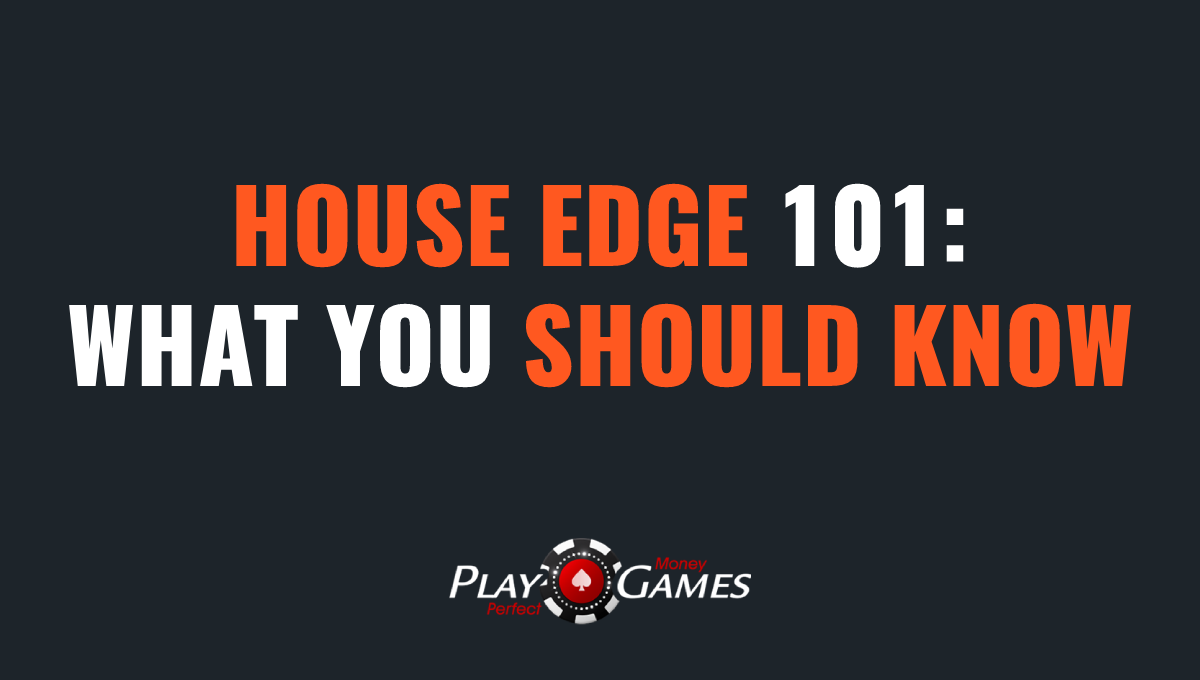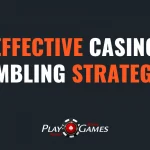House Edge 101: What Every Player Should Know
Examine House Edge deeply and how it affects your chances of winning while playing games for real money. For a more effective gaming experience, learn how to deal with and mitigate the impacts of house edge.
Participating in games of chance with financial stakes requires an understanding of probability and odds principles. One of these notions is the house advantage, also called casino advantage, which affects a player’s chances of winning in the long term in a significant but subtle way. Instead of brushing house edge off as arcane terminology, gamblers would be smart to reflect carefully on how it affects betting outcomes. Players are able to make better decisions if they have perspective and understanding of this “invisible force.” With this article, we intend to clarify the significance and nature of this key probability measure to demystify house edge and improve decision-making.
Definition and Calculation of House Edge
Fundamentally, house edge refers to the statistical advantage the gambling establishment has relative to participants in a given game. It is quantified as a percentage representing the average portion of each wager the house expects to retain after an infinite number of bets. Put differently, House Edge reflects the built-in profit margin for the gambling venue. For instance, if a game’s house edge is 5%, the casino anticipates retaining $5 on average for every $100 risked by players in the long run. While an individual bet may result in either gaining or losing money, the house aims to slowly accrue earnings through this embedded advantage at a rate dictated by the game’s house edge.
The Impact of House Edge on Gambling Outcomes
Comprehending house edge is pivotal given its direct influence on winning probability. Research indicates that higher house edge values correspond to diminishing chances of achieving favorable results. The concept can be likened to participating in contests with unbalanced assessment parameters marginally favoring the casino, as opposed to perfectly equitable circumstances.
Take a coin flip bet, for instance, where players place bets on heads or tails with a defined house edge to demonstrate this relationship. If there was no casino advantage in this hypothetical situation, the winning chance would be exactly 50%. The odds of a player winning are reduced to 47.5% by adding a 5% house edge, which quietly skews the distribution of possible outcomes away from parity. In isolation, this difference might seem insignificant, but over time, it suggests the house retains a little probability advantage that might result in long-term financial benefit at the expense of patrons. Thus, it is nevertheless advisable to understand house edge amounts in order to guide responsible betting behavior and effectively manage chance-based financial activities.
House Edge and Odds: Are they the same?
While house edge and odds both relate to probabilities, they describe different aspects of gambling games. House edge represents the overall statistical advantage built into the game’s design that favors the casino over many individual bets. Odds, on the other hand, quantify the probability of particular outcomes occurring on individual wagers.
This distinction is meaningful, as house edge influences the distribution of profits and losses at a macro level, while odds determine payout amounts and the likelihood of specific results on a micro, bet-by-bet basis. Maintaining conceptual clarity between these related but discrete probability metrics is vital for developing a robust understanding of how games are structured from both a theoretical and practical playing perspective.
This is also important for facilitating informed decision-making, risk assessment, and strategy applications for navigating the world of money games successfully.
House Edge and Return to Player (RTP) Comparison
Return to player (RTP) is another important measure that should be taken into account when assessing gambling games with financial stakes in addition to house advantage. Although they both have to do with the statistical distribution of bets, they reflect different viewpoints. In particular, House Edge describes the amount of inherent advantage that the casino maintains across a series of wagers. As an alternative, RTP shows the anticipated percentage of total bets that players will eventually recover.
In essence, House Edge and RTP are inversely comparable when it comes to relating to various stakeholders. The RTP would be 95% if the house edge in a game is set at 5%. This means that players would expect to recover around 95 cents for every dollar they bet after a long session of play. This distinction is crucial since RTP directly affects possible player yields whereas house edge affects gaming venue profits.
Through a thorough analysis of a game’s house advantage and the calculation of the corresponding RTP, well-informed decisions that take individual risk profiles into account become practical. Game choices that provide reduced house edges and higher RTP thresholds provide the best possible mix of opportunities to extend engagement and fulfill risk-taking inclinations. Having the conceptual and analytical clarity that differentiates these entangled but varied indices is essential to maximizing amusement while judiciously handling money-based entertainment.
Strategic Gambling Strategies to Counter House Edge
While eradicating house edge completely is impossible by definition, research affirms certain approaches can offset its influence and favor player outcomes relative to doing nothing.
One recommended tactic is prioritizing games exhibiting narrower house edge differentials. For example, wagers involving salient skill components like blackjack, baccarat, or video poker variations tend to confer lesser inherent casino benefits relative to chance-driven alternatives like slot machines, keno, or scratchies. By selectively engaging formats with condensed house edge scope, long-term returns show enhanced potential to outperform the theoretical house advantage.
Changing bet amounts purposefully in accordance with the size of the house edge is another evidence-based countermeasure. To limit losses and maximize profit potential over several plays, avoid high-risk bets with large house edges and stick with lower-risk options with smaller differentials. Even if the results of a single session are still uncertain, consistent usage of this regulated betting behavior gradually weakens the house’s statistical probability superiority.
Although there is no magic bullet that can guarantee a win rate, players may manage their financial participation in a way that makes sense by carefully weighing the house edge and gradually outweighing the establishment’s odds through well-informed decision-making. Such risk-moderating techniques can be further refined and quantified through study.
Differences in House Edge Among Typical Gambling Games
The influence of House Edge varies significantly according to the kind of game, thus it is important to understand how it affects different forms because making similar decisions might jeopardize long-term benefits.
When the basic strategy is used skillfully, blackjack has a relatively limited house edge spread, usually between 0.5 and 1%, which helps optimists slightly exceed casino expectations. Alternatively, depending on the number assortment, roulette often yields greater house margins of 2.7–5.26%. Single-number wagers have the greatest disadvantage, whereas red/black reduces risk.
In a unique case, poker features competition amongst participants instead of direct confrontation with the house. Though establishments charge small rakes, skilled players can gain probabilistic edges through talent-based decision-making, rendering it a combination of aptitude and fortune divergent from pure games of chance dominated by inherently preset house allowances.
If you want to choose entertainment wisely, it is advisable to carefully consider the fundamental house edge differentials specific to each kind of game, including the implications for long-term financial result probability. A risk management strategy based on evidence is one that minimizes these variations.
Practical Applications of House Edge Awareness
People who have a clear understanding of the house edge are in a better position to utilize safe behaviors while interacting with chance-based entertainment. The main suggestion is to carefully choose games with small disadvantages, such as blackjack, in order to improve long-term expectations. You should also use strategic betting behavior to minimize possible losses and maximize profits based on this probability construct.
Keeping in mind that the house is consistently favored by the underlying statistical mechanism also justifies patience, as there will be both winning and losing sessions, but the quantifiable advantage endures over time. Although it is reasonable to be excited by short-term outcomes, it is best to temper expectations with grounded reality to avoid any possible drawbacks.
Conclusion
In conclusion, the house edge is a significant yet unseen probabilistic influence that permeates many money games. The present article argues that, despite the presence of this ubiquitous feature, optimists can still perform well when making informed entertainment decisions by understanding and applying evidence-based techniques sparingly. Establishing a well-rounded baseline that recognizes the nature and implications of the casino edge is consequently worth the effort for long-lasting lucrative action.


